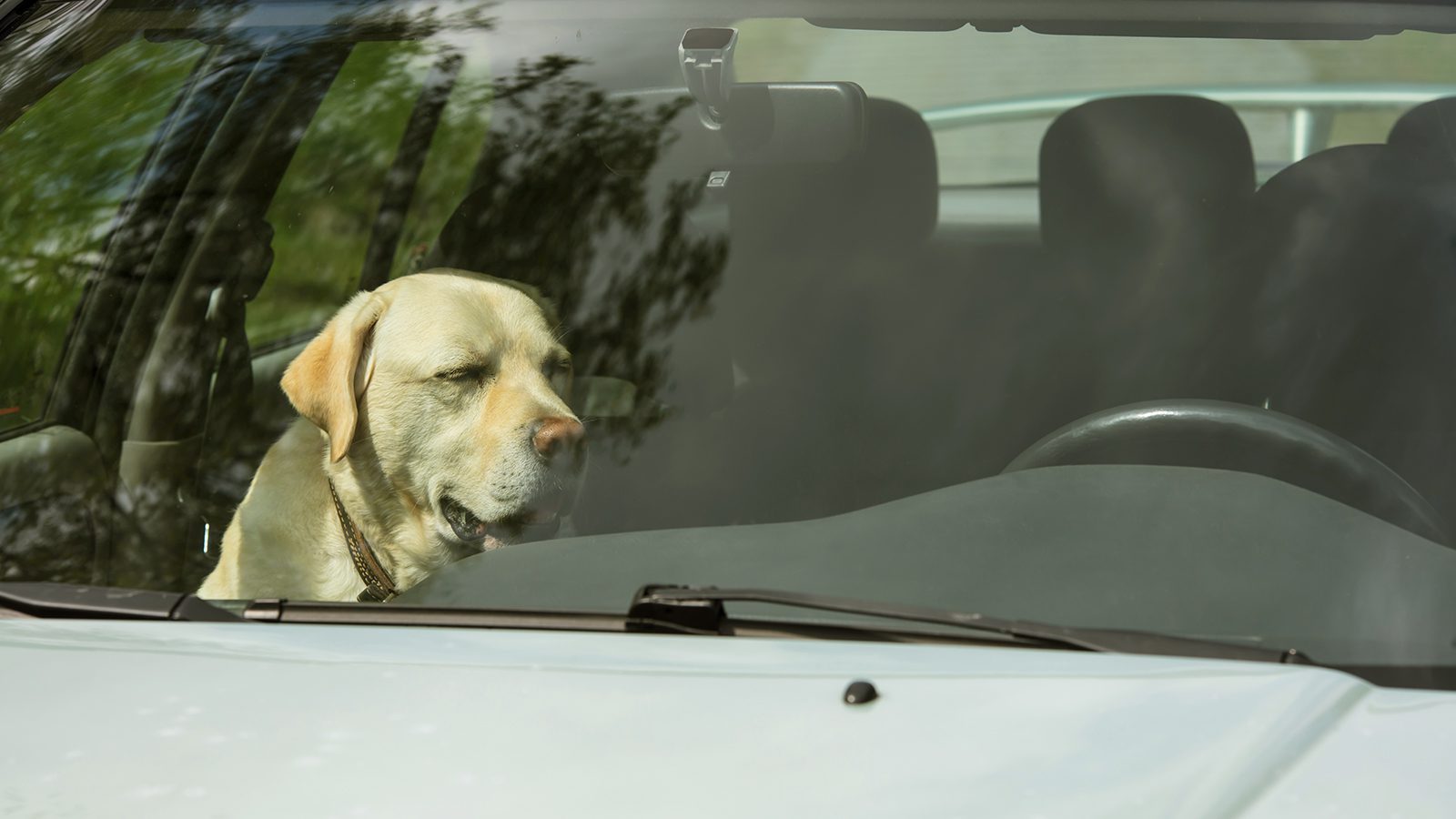Leaving your pet in a parked car can be a death sentence.
PETA recently issued a stark warning for pet owners. Hot cars are not safe places for dogs in the summertime. Every summer, tragic stories surface of dogs who have suffered or even died due to being left in hot cars. This serious issue needs more attention, as even a few minutes in a hot car can be fatal for a dog.
It’s crucial for pet owners to take every possible precaution to protect their dogs from the dangers of hot cars during the summer. One effective way to ensure your pet’s safety and comfort while traveling is by using high-quality car seat covers. These covers not only shield your car seats from fur and dirt but also provide a cooler surface for your pet to rest on during trips.
Many car seat covers are designed with breathable materials that help regulate temperature, ensuring your pet remains comfortable even on warm days. Seat Covers Unlimited offers a wide range of options tailored to meet both your and your pet’s needs, making it easier to maintain a cool and clean environment inside your car. Remember, investing in high-quality car seat covers is a small but significant step in safeguarding your furry friend’s well-being during summer travels.
To further ensure your pet’s comfort and safety on the road, choosing the right car seat cover is just one part of the equation. When it comes to purchasing a car, especially if you’re looking for a model that combines practicality with style, the BMW 1 Series stands out as a noteworthy option. Not only does this vehicle offer a smooth driving experience, but it also comes with features that cater to both driver and passenger comfort.
A BMW 1 series review can provide valuable insights into how this model performs and whether it meets your expectations for a used car purchase. By investing in a reliable vehicle and using high-quality car seat covers, you can ensure a pleasant and secure travel experience for both you and your furry companion.
In an article explaining the perils of the summer heat to canines, PETA warns:
“Every year, dogs suffer and die when their guardians make the mistake of leaving them in a parked car—even for “just a minute”—while they run an errand. Parked cars are death traps for dogs.” -PETA
How widespread is this problem? PETA tracks the number of pets (cats, dogs, and others) that perish in cars yearly. Here are the recent statistics:
- 2023 (through June) – 47 deaths/103 rescues
- 2022 – 56 deaths/488 rescues
- 2021 – 59 deaths/145 rescues
- 2020 – 31 deaths/50 rescues
- 2019 – 53 deaths/125 rescues
- 2018 – 60 deaths/93 rescues
The tragedy here is that owners could have prevented these deaths.
Casey Kern, PETA’s Senior Manager of Action Team, says it best:
“You probably don’t realize that your dog can die of a heatstroke in the time that it takes you to make a quick pit stop. Whatever errand you have to make is not as important as your dog’s life.”
Why Parked Cars Are So Dangerous to Dogs

Dogs are not capable of cooling themselves as efficiently as humans. They primarily cool down by panting–and they cannot pant enough in extreme heat. When the outside temperature is a seemingly comfortable 70 degrees, the temperature inside a parked car can skyrocket to 99 degrees within just 20 minutes. On a hotter 90-degree day, the interior temperature can reach a staggering 109 degrees in the same amount of time.
Heatstroke in dogs can occur within just 15 minutes, leading to brain damage or even death.
Even if you leave the air conditioning running, you can see a dire outcome.
Consider the death of a law enforcement dog, Aron, in Houston, TX, on June 23, 2023. The handling police officer left Aron inside their patrol car with the air conditioning cooling the canine officer. While the handler was away from the vehicle, the car’s engine and the cooling system shut off. Aron was in extreme distress when the officer realized the car had shut off–its backup mechanics that safeguard against this scenario had failed. Aron did not survive.
What Are the Signs of Heatstroke in Dogs?
Heatstroke in dogs is a serious condition that can rapidly become life-threatening. It is crucial to recognize the symptoms early to provide immediate treatment. Here’s an expanded explanation of each symptom:
- Restlessness: Dogs suffering from heatstroke may appear anxious or agitated. They may pace, be unable to settle down, or seem generally uncomfortable.
- Excessive Thirst: Dogs with heatstroke often exhibit an increased need for water as they attempt to cool down. They may drink more frequently or in larger quantities than usual.
- Thick Saliva: Dehydration, a common side effect of heatstroke, can cause a dog’s saliva to become thick and sticky. You might notice your dog drooling excessively or having difficulty swallowing.
- Heavy Panting: Panting is a dog’s primary method of cooling down. In cases of heatstroke, panting may become rapid, heavy, and continuous as the dog tries to lower its body temperature.
- Lethargy: Canines suffering from heatstroke may seem unusually tired or weak. They may be less responsive to stimuli or show little interest in activities they usually enjoy.
- Lack of Appetite: Heatstroke can cause a canine to lose interest in food. This symptom, combined with others, can clearly indicate distress.
- Dark Tongue: A dog’s tongue may turn a darker color, often a deep red or purple, due to the increased blood flow as the body tries to cool itself down.
- Rapid Heartbeat: The heart rate can increase significantly as the body fights off the heat. This attempts to circulate blood (and therefore heat) away from the body’s core.
- Fever: A dog’s normal body temperature ranges from 101 to 102.5 degrees Fahrenheit. As a result of heatstroke, their body temperature can quickly rise above this range.
- Vomiting: Heatstroke can cause gastrointestinal upset, leading to nausea and vomiting. This can further dehydrate the pet, exacerbating the condition.
- Bloody Diarrhea: Severe heatstroke can cause damage to the intestinal lining, leading to bloody diarrhea. This is a severe symptom that requires immediate veterinary attention.
- Lack of Coordination: Heatstroke can affect a dog’s neurological system, leading to dizziness, confusion, or unsteady movements. The dog may stumble, have difficulty standing, or even collapse.
If you notice any combination of these symptoms in a dog, acting quickly is crucial. Remove them from the hot environment immediately, provide cool (not cold) water to drink, and take them to a veterinarian as soon as possible.
What to Do if You See a Pet Left in a Car
PETA also explains how to respond if you ever encounter a dog alone in a hot car. Quick action is necessary. Note the car’s details, including color, model, make, and license plate number, and try to have the owner paged in nearby buildings. If this isn’t possible, or the owner can’t be found, call local humane or animal control authorities or the police. However, if the dog’s life appears to be in imminent danger, and the authorities are unresponsive or too slow, find witnesses who can back up your assessment, take steps to remove the suffering animal from the car, and wait for authorities to arrive.
If a dog shows signs of heatstroke, it’s essential to get them out of the heat immediately. Of course, that preferably means going into an air-conditioned vehicle and then to a veterinarian. If you can’t transport the dog, take them into an air-conditioned building and call animal control, emphasizing that it’s an emergency.
To help cool the dog down, provide water to drink, and if possible, spray the dog with a garden hose or immerse them in a tub of cool (but not iced) water for up to two minutes to gradually lower its body temperature. You can also place the dog in front of an electric fan and apply cool, wet towels to the groin area, stomach, chest, and paws. Be careful not to use ice or cold water; don’t over-cool the animal.
PETA Also Warns Pet Owners About Another Hazard to Pets – Hot Pavement on Their Paws
The dangers of summer heat to dogs extend beyond the confines of a hot car. One often overlooked hazard is the heat of the pavement, which poses a significant risk to our canine companions.
On a day when the air temperature reaches 86 degrees Fahrenheit, the asphalt’s temperature can soar to a blistering 135 degrees. This is hot enough to cook an egg in just five minutes. That fact illustrates the extreme heat that pavement surfaces can absorb and retain.
For dogs, this can be particularly dangerous. Although tougher than human skin, their paw pads are still sensitive. Walking on hot pavement can cause painful burns and blisters, potentially leading to long-term damage. In severe cases, it can even result in permanent scarring or the need for medical treatment.
Furthermore, the heat radiating from the pavement can increase a dog’s body temperature, contributing to the risk of heatstroke. This is especially true for smaller dogs or breeds with shorter legs, as their bodies are closer to the ground and the hot surface.
Before setting out on a walk with your dog on a warm day, it’s crucial to test the pavement’s temperature. Place the back of your hand against the asphalt and hold it there for seven seconds. If it’s too hot for you to keep your hand on, it’s too hot for your dog to walk on. Instead of walking during the peak heat, plan time in the morning or evening.
Final Thoughts: Summertime Can Be Hazardous to Pets Without Taking Proper Precautions
As pet owners, it’s our responsibility to ensure the safety and well-being of our furry friends. One of the most critical roles of pet ownership is understanding the risks associated with hot weather. In particular, humans should understand the dangers of hot cars and scorching pavement.
So a good rule of thumb is–if it’s too hot for you, it’s definitely too hot for them. If you can’t comfortably hold your hand on the pavement for a few seconds, it’s too hot for your dog’s paws. Finally, it’s much worse for your dog if you feel uncomfortably hot in the car.
Remember, our pets rely on us to make the right decisions for their health and safety. By being aware of the risks and taking appropriate precautions, we can ensure our dogs stay safe and enjoy the summer months with us.




















